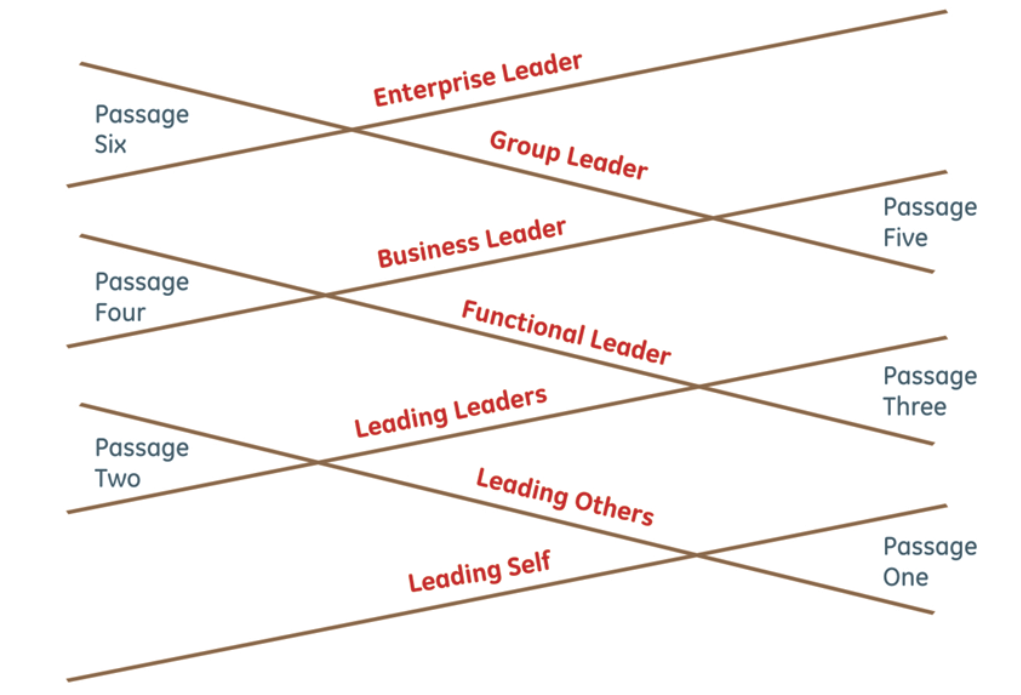Leadership Levels
In today’s fast-changing business world, where new technologies and global events constantly reshape the landscape, it’s crucial to rethink some of the core concepts. One such cornerstone is ‘leadership,’ which plays a central role in steering organizations through constant shifts and challenges.
In this series, we dive into leadership’s nuts and bolts, starting with its basic mechanics. What exactly are these mechanics, and how do they shape effective leadership? Join us as we unpack the fundamentals of leadership, exploring what makes it tick in today’s dynamic business environment.
Ram Charan, Stephen Drotter, and James Noel, in their influential work ‘The Leadership Pipeline,’ outline a model of various levels of leadership:
- Individual Contributors (Managing Self)
- Managers (Managing Others)
- Managers of Managers (Managing Managers)
- Department Leaders (Functional Managers)
- Company Leaders (Business Manager)
- Managers of Companies (Group Manager)
This model sets itself apart through:
- Inclusiveness: By recognizing individual contributors as the initial tier of leadership.
- Tailored Approach: Acknowledging that each level requires a distinct mix of skills, focus, and contribution.
- Guidance: Providing insights into navigating the challenges inherent in transitioning between levels.
The shift from self-leadership to leading a team presents a significant challenge. Previously reliant on personal expertise, individuals must now coordinate results through team collaboration. This necessitates a reevaluation of skills, time management, and personal contribution.
Looking back on my own path, the transition from an individual contributor role to management unveiled a crucial lesson. After five years of hands-on work and exerting control, stepping into a team leadership position demanded relinquishing control and empowering subordinates. A pivotal piece of feedback from a team member acted as a wake-up call, emphasizing the necessity for adaptation.
Advancing to the position of HR Director introduced further adjustments. This promotion stirred a blend of pride and uncertainty. Leveraging the insights of the Model, I tackled the typical challenges of such transitions:
- Adapting behavioral and mindset shifts vital for overseeing managers, such as creating space for the relationships between managers reporting to me and their teams, even if it sometimes resulted in a slowdown in operations.
- Aligning with company strategy and commercial priorities, moving away from previous operational emphases.
Each leadership transition unveils a change curve, necessitating:
- Skill diversification.
- Adjustment of focus areas and time management.
- Redefinition of the success criteria.
Reflecting on the trajectory of leadership evolution since the inception of ‘The Leadership Pipeline‘ in 2001, it appears that the landscape has seen few seismic shifts… Contemplating this further, could the inclusion of ”Virtual Leadership” (managing individuals dispersed across different locations) and ”Indirect Leadership” (overseeing those who lack direct reporting lines) enrich the list? Are there any other types of leadership you would add from your perspective?
Edited: 27 April 2024 (Turkce orjinal versiyonuna buradan ulasabilirsiniz)
